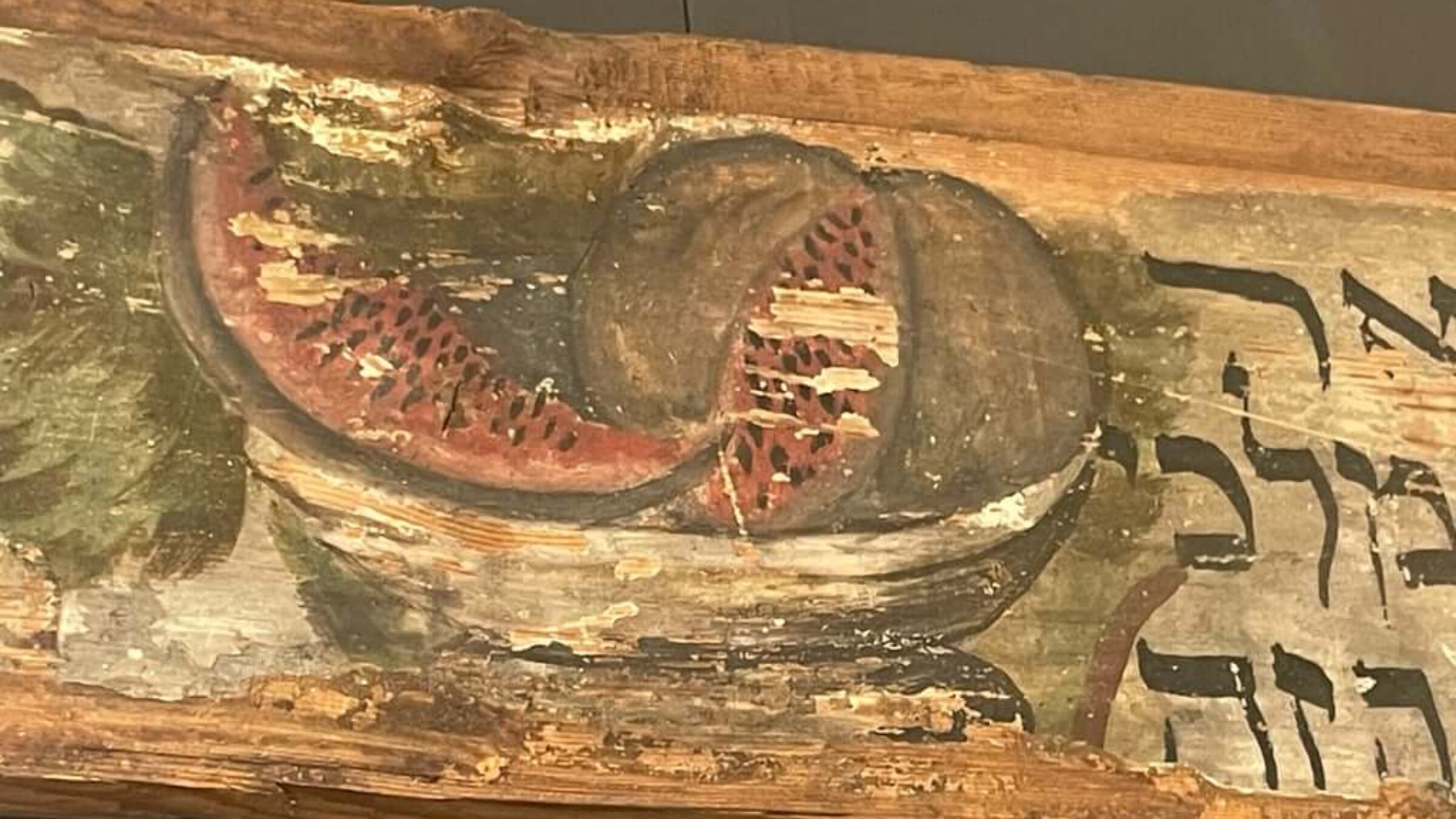טשיקאַוועסן: אונגערישע אויסשטעלונג ווײַזט רמזים פֿון הילצערנער שיל פֿון 18טן י״הTidbits: Exhibit displays remnants of 18th century wooden synagogue
אינעם 18טן יאָרהונדערט איז די קהילה אין נאַזנאַ געווען די צווייט גרעסטע אין גאַנץ טראַנסילוואַניע.

Courtesy of Jewish Heritage Europe
Tidbits is a bi-weekly feature of easy news briefs in Yiddish that you can listen to or read, or both! If you read the article and don’t know a word, just click on it and the translation appears. You’ll also find the link to the article in English after each news brief. Listen to the report here:
אין אַן אויסשטעלונג בײַם ייִדישן מוזיי אין בודאַפּעשט קען מען זען די איבערבלײַבן פֿון אַ הילצערנער שיל, וואָס איז אינעם 18טן יאָרהונדערט געשטאַנען דאָרט, וווּ ס׳איז הײַנט נאַזנאַ, רומעניע.
די הילצערנע פּאַנעלן פֿון דער שיל האָט מען ערשט לעצטנס אַנטדעקט אינעם בוידעם פֿונעם מוזיי. די אויסשטעלונג שליסט זיך סוף־מײַ.
די שיל איז געבויט געוואָרן אין 1747. ייִדן האָבן דעמאָלט נישט געטאָרט וווינען אין די קיניגלעכע שטעט, האָבן זיי זיך באַזעצט מחוץ דער שטאָט, אין נאַזנאַ, אויף דער נחלה פֿון אַדללײַט — דער משפּחה באַרטשעייִ. אינעם 18טן יאָרהונדערט איז די קהילה דאָרט געווען די צווייט גרעסטע אין גאַנץ טראַנסילוואַניע.
פֿון דרויסן האָט די שיל אויסגעזען ווי אַ שײַער אָבער אינעווייניק זענען די הילצערנע ווענט געווען באַפֿאַרבט מיט בילדער פֿון די מזלות און אויסצוגן פֿון די תּפֿילות אויף לשון־קודש.
נאָך דעם ווי מע האָט אינעם מיטן 19טן יאָרהונדערט דערלויבט די ייִדן צו וווינען וווּ זיי ווילן, האָט די ייִדישע קהילה אין נאַזנאַ זיך היפּש פֿאַרקלענערט. זי איז אין גאַנצן פֿאַרשוווּנדן געוואָרן אין בערך 1910. די הילצערנע שיל האָט מען פֿאַרלאָזט, און אין 1940 האָט די געבײַדע זיך צעפֿאַלן.
ווען דער ייִדישער מוזיי אין בודאַפּעשט האָט דעמאָלט זיך דערוווּסט וועגן דער חרובֿער שיל, איז אַ רבֿ און היסטאָריקער, גיאָרגי באַלאַש, געפֿאָרן אַהין און געבראַכט די אַכט הילצערנע פּאַנעלן מיט דער באַן קיין בודאַפּעשט. אין 1944 איז ער דעפּאָרטירט און אומגעבראַכט געוואָרן אין אוישוויץ.
אַן אַרטיקל וואָס באַלאַש האָט אָנגעשריבן וועגן דער געשיכטע פֿון די ייִדן אין נאַזנאַ און וועגן דער ראַטיר־אַרבעט פֿון די פּאַנעלן, געפֿינט זיך איצט אין דער אויסשטעלונג.
צו לייענען מער וועגן דעם אויף ענגליש, גיט אַ קוועטש דאָ.
To read more about this in English, click here.
A message from our Publisher & CEO Rachel Fishman Feddersen

I hope you appreciated this article. Before you go, I’d like to ask you to please support the Forward’s award-winning, nonprofit journalism during this critical time.
At a time when other newsrooms are closing or cutting back, the Forward has removed its paywall and invested additional resources to report on the ground from Israel and around the U.S. on the impact of the war, rising antisemitism and polarized discourse.
Readers like you make it all possible. Support our work by becoming a Forward Member and connect with our journalism and your community.
— Rachel Fishman Feddersen, Publisher and CEO






















